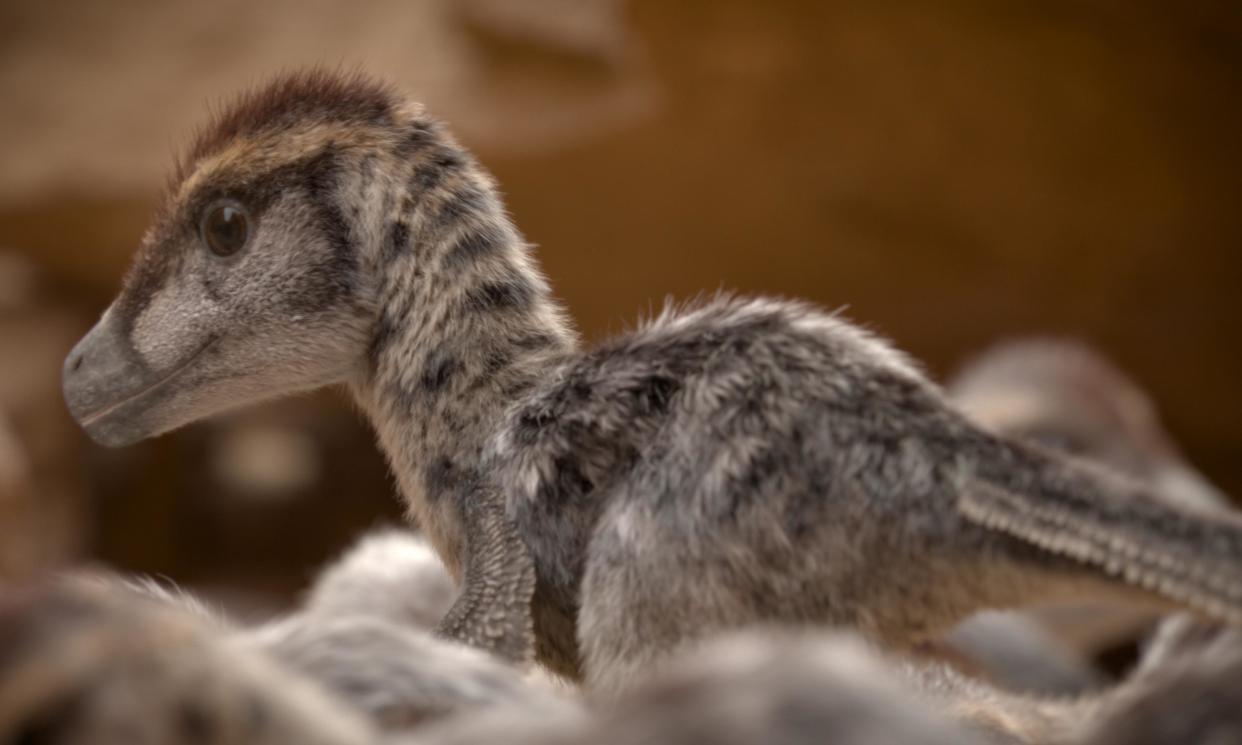David Attenborough’s new series at last shows dinosaurs in all their feathered glory

The utterly extraordinary Prehistoric Planet has returned this week for a second season and, as a palaeontologist, I remain utterly enthralled by the whole thing. You might think I’d be spoiled for choice with the apparently unending parade of movies, video games and documentaries featuring animated dinosaurs, but this programme stands head and shoulders above anything else in terms of the accuracy of its animals and the naturalism they evoke.
The jump from Ray Harryhausen classics such as One Million Years BC in the mid-1960s to Jurassic Park in 1993 was massive. Jurassic Park showed dinosaurs in a new way to vast audiences and ushered in a new wave of interest and representation, most notably in the BBC’s Walking with Dinosaurs series in 1999. However, 30 years on, most dinosaurs in mainstream film and TV still follow its look and feel, despite our scientific understanding of dinosaurs and their contemporaries having advanced enormously since then. Prehistoric Planet is as much, if not more, of a leap forward in showing dinosaurs as we think they really were.
The most obvious progression is the number of dinosaurs being correctly shown with feathers and other filamentous coverings. Since the late 1990s, the fact that birds evolved from dinosaurs has become firmly established in palaeontology. Numerous fossils of fully feathered dinosaurs have been discovered, implying that many more bore feathers too. Seeing these animals rendered as they should be is very exciting. The details of the models, from the shape of the pupils, the size of the scales, the design of the colours, patterns and the curve of the claws, all speak to a depth of biological understanding not seen on screen before.
Of course, some details are contentious and others unknowable, but the appearance and, more importantly, actions of the dinosaurs in these series are about as accurate as they could be. Where certain ideas are inevitably somewhat speculative, they are based on our current understanding. For example, in series one we see a herd of triceratops walking into caves to access some rare minerals needed in their diet. This is not something recorded in the fossil record, but we know that some modern animals – including elephants – do it, so it’s perfectly reasonable and likely that some dinosaurs did the same.
For me, the key thing is not that these ancient animals are reproduced 100% accurately, but that they are brought to life realistically. Showing dinosaur mating rituals, parents nurturing their offspring and small animals challenging predators a dozen times their size is new, or very rare – and yet these are behaviours that are completely normal for animals. On top of this, it’s easy to spot various references to real scientific papers on the behaviour, appearance, actions and ecology of dinosaurs and other animals in every episode. There might necessarily be some extrapolation and filling in to account for the gaps in the fossil record, but this compelling television is clearly based on real research.
And Prehistoric Planet doesn’t just show the inevitable gory scenes, such as a fight to the death between a tyrannosaurus and triceratops; it also gives the animals (and viewers) a chance to breathe and take in the view, whether it’s a swamp, desert or ice field (not just another procession of jungles). Dinosaurs, pterosaurs, plesiosaurs and other ancient animals are not monsters or mythical creatures, but were real (if very odd by today’s standards) living, breathing and behaving creatures interacting in thriving ecosystems.
And so it is welcome to see other animals getting their due alongside these great reptiles. The inclusion of frogs, snakes, birds, mammals and ammonites, all set into coherent and realistic environments, makes the programme stand out even more. Although tyrannosaurus, velociraptor and some other household names appear, it’s extremely refreshing to see animals that few people have heard of, from alcione to zalmoxes, as well as numerous animals and landscapes that have never been shown before.
Related: We’re finding out more about dinosaurs than ever – but their sex lives still elude us | Dave Hone
Science usually moves on incrementally, and occasionally in major jumps, but public perceptions tend to lag behind. It takes time for new ideas to become mainstream and then to appear on screen. Prehistoric Planet’s real achievement is not just bringing these animals to life, but doing so at the cutting edge of scientific discovery. It shows the public what palaeontologists believe these animals were really like, not just a slightly polished version of what scriptwriters imagine they were.
As someone who is actively engaged in research into the biology of dinosaurs and pterosaurs, and in outreach and communication to the public about these animals, I find Prehistoric Planet to be a shining example of bringing them to life. The new series should be appreciated not just for its beautiful cinematography and Attenborough’s narration, but as a bleeding-edge representation of the science of the extinct.
Dr David Hone is a reader in zoology at Queen Mary, University of London, specialising in dinosaurs and pterosaurs. He blogs at Archosaur Musings, and presents the Terrible Lizards podcast. His latest book is The Future of Dinosaurs


